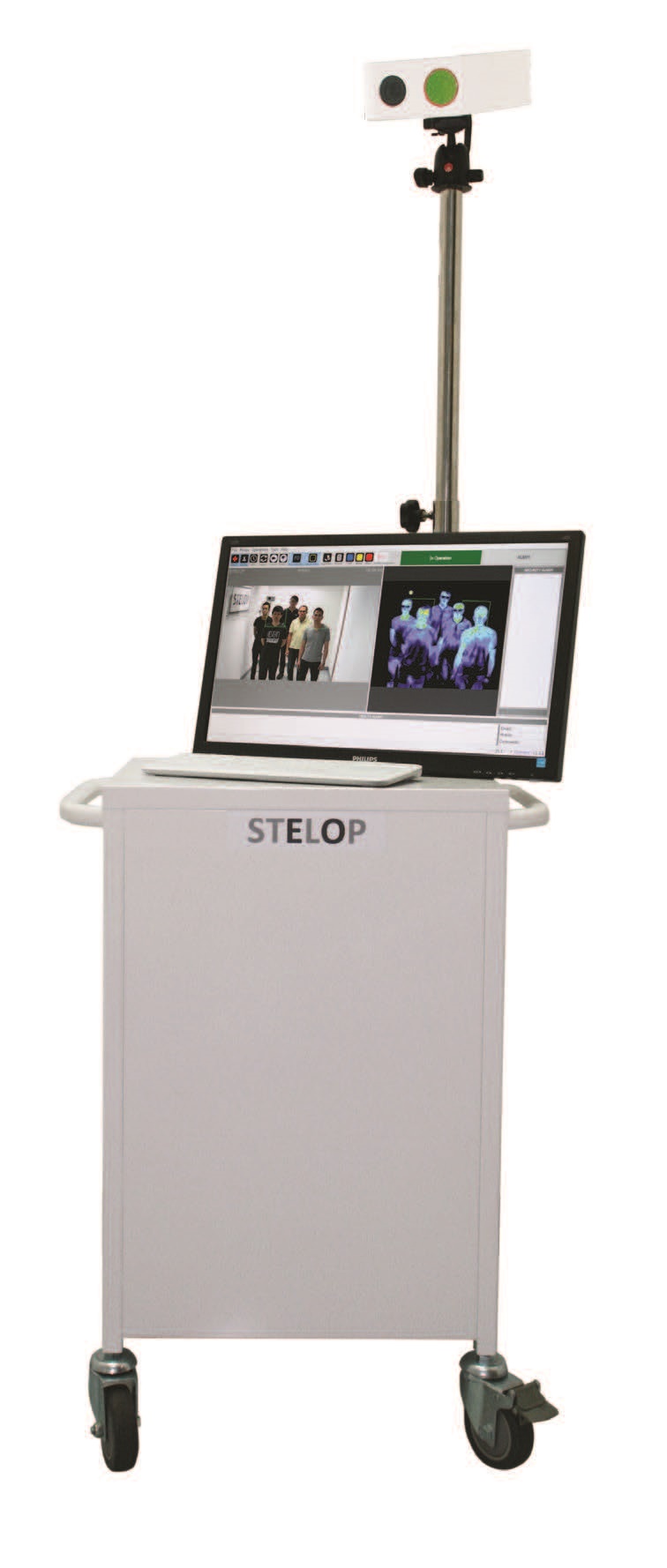Over the past few weeks, the COVID-19 pandemic has struck fear into the hearts of millions, closing international borders and bringing the global economy to a partial standstill.
One thing is clear, fighting the enemy must mean being able to identify it first.
Our engineers and technologists had learnt the lesson the hard and rigorous way back in 2003, and know the importance of intelligence. Back then, the APAC region was hit by the severe acute respiratory syndrome (SARS) crisis, and time is of the essence. In the quest of obtaining fast and accurate temperature readings for the masses, the engineers worked round the clock to incorporate thermal imaging technology into the design, and developed the world’s first Infrared Fever Screening System (IFSS) – all within a week, with more than 180 sets deployed across the region.

The IFSS has since gone through several rounds of upgrading, and we have further researched and advanced the system: the result is a more intuitive and smart solution that can detect fever victims with greater efficiency and accuracy.
Fast forward to now. The team is once again facing a similar, but more severe and widespread pandemic. The IFSS team has been turning around and deploying systems since February 2020. From the Airshow and Thaipusam in Singapore, to the airports, hospitals, hotels and commercial buildings across the region, including Mexico and Vietnam, these unsung heroes have steadfastly focused on deploying IFSS across the world.
As we step-up on the production of IFSS to meet the increased worldwide demand, let us share what goes behind the scenes of inventing the world’s first infrared fever screening system.
Battling the SARS crisis with technology
We learnt very early on during the 2003 SARS epidemic that fever was a common symptom among carriers of the infectious disease. This, in turn, was a key piece of intelligence, which allowed governments to screen carriers and then isolate them.
However, the conventional means of taking temperatures using ear, head or oral thermometers faced several problems. One problem was that it took too long to screen for temperatures, especially at places with large numbers of people. As governments ramped up checking of temperatures at airports, reports of long queues at screening stations during peak hours started to rise. This ironically risked having the virus spread even faster in crowded places through human-to-human transmission.
To tackle this challenge, we jointly worked with Defence Science and Technology Agency (DSTA) to develop a solution to effectively and efficiently screen large groups of people for individuals nursing a high fever – using thermal imaging technology.
The key to infrared imaging is based on a simple premise – when a human’s core temperature rises, so does the amount of electromagnetic radiation emissions through their skins. Drawing on this principle, the team managed to develop the system within a week, a testimony to the power of collaboration and the determination of both organisations to slow the spread of the virus.
The first version of the product officially launched on 11 April 2003 as a swift response to counter the SARS epidemic in Singapore. Soon after, IFSS was fielded in most local hospitals, educational institutions, government and private buildings, as well as mass event sites.
The results of IFSS implementations were encouraging – temperature screening became much faster, while queues were substantially shortened. More importantly, the psychological impact was tremendous. With the system providing effective community screening, there was greater assurance in the population that they were being kept safer from SARS.
For governments and other organisations, the first line of defence also significantly reduced the time and manpower needed to detect those who are running a fever. This, in turn, enhances the ability to significantly reduce the possibility of virus transmissions.
For these reasons, the system was a huge success in both Singapore and internationally. IFSS has since been deployed all over the world to tackle SARS, Middle East respiratory syndrome (MERS) and now, the COVID-19. This includes international airports from Hong Kong and Taiwan to Mexico and the United Arab Emirates.
Smarter and Intuitive fever screening with facial detection
Today, we face a much deadlier disease in the form of COVID-19. COVID-19 differs from SARS in many ways. But carriers of the virus are asymptomatic in the early stages and do not display symptoms even if they carry the virus. This means that it is much harder to identify those who have the virus, compared with how we dealt with SARS.
But like SARS, fever is among the few signs that someone could have COVID-19. Given the paucity of options, we have currently, any intelligence to help the authorities spot victims is critical. More importantly, the IFSS makes it efficient for authorities to quickly scan large masses of people.
The IFSS has gone through several rounds of upgrades to make it even more accurate and efficient. It is now equipped with a facial detection feature that minimises false alarms from objects such as a hot cup of coffee or a warm meal. Now, only an elevated body temperature will trigger an alert.
For smaller-scale implementations, a portable fever detection solution – the Infrared Temperature Self-check System (iTS) is being developed and rolled out for trials in Singapore. This allows individuals to quickly monitor their personal temperatures using a portable device equipped with a thermal camera, under one second.
As the world continues to battle the spread of the disease, employing the best tools we have at our disposal and working together will give us the best chance of winning this war. We are heartened that more than 400 sets have been deployed globally.
Together, we can fight this battle and help contain the global spread of COVID-19 with innovative technology and social responsibility.
Contact us